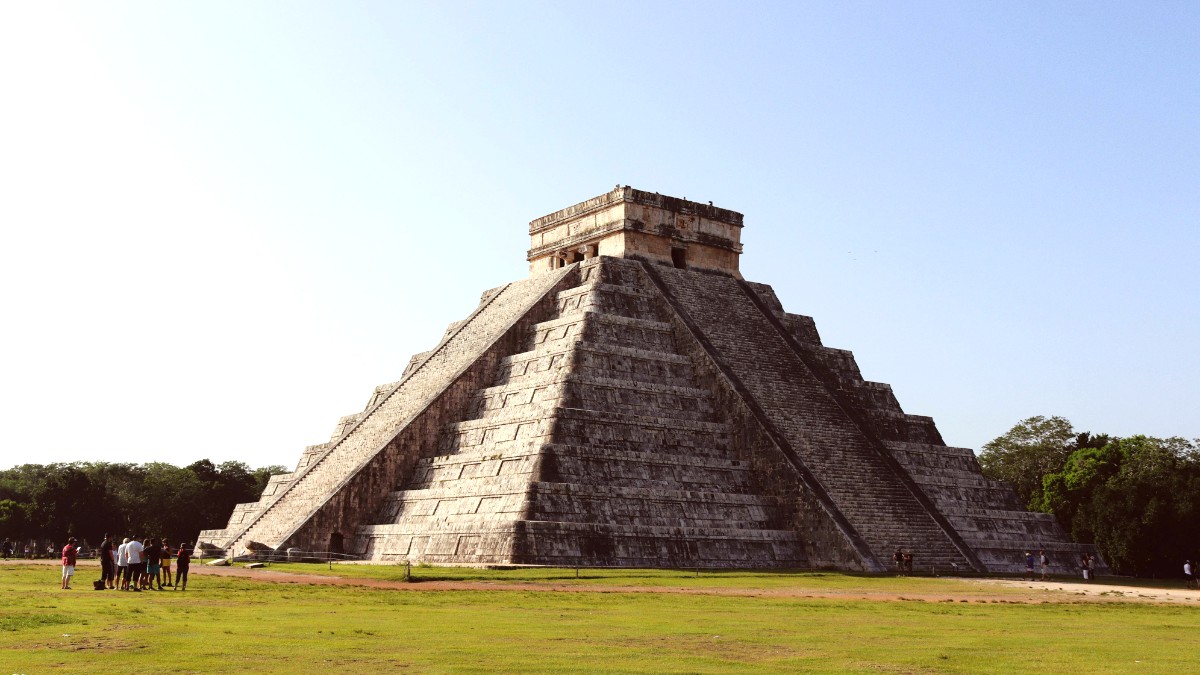
Yucatan Peninsula, Mexico
Chichen Itza itself has no metro, tram, or extensive local bus system within the archaeological zone or the small village of Pisté. The site welcomes walking. Inter-city Buses (ADO) are useful for reaching Chichen Itza from major cities. These are comfortable, air-conditioned buses with reclining seats and restrooms. They connect large tourist hubs (Cancun, Mérida, Playa del Carmen, Tulum) to Valladolid, the most convenient base for visiting Chichen Itza.
Second-Class Buses (Oriente, Mayab) serve more local routes. They are less comfortable and typically lack air conditioning, but offer cheaper and more frequent services between smaller towns and Pisté/Chichen Itza (e.g., from Valladolid). These buses are good for shorter, budget-friendly trips. Colectivos (Shared Vans) are private, shared vans on fixed routes. They are a common and affordable way to travel between Valladolid and Pisté/Chichen Itza. These vans depart when full, making them frequent during daylight hours. Find them at designated stops or sometimes flagged down along their route.
Purchase ADO tickets online, at terminals, or OXXO. Colectivos accept cash only to the driver.
ADO runs frequently early morning to late evening. Colectivos operate frequently during daylight hours (approx. 6 AM to 6 PM).
ADO hubs are in major cities like Cancun, Mérida, Valladolid. The Chichen Itza ADO stop is directly outside the main entrance. Colectivos in Valladolid depart near the main bus station.
Especially for peak season or limited routes, secure your tickets ahead of time.
Be at the bus station at least 15-20 minutes before departure.
Phrases like "boleto a..." (ticket to...) or "¿De dónde sale?" (Where does it leave from?) are helpful.
Be ready for a short wait until the van fills up before it departs. A good way to meet locals.
Taxis provide a convenient, though often more expensive, option for local transport. Ride-sharing services are available in some larger cities, but less so near Chichen Itza.
International companies (Hertz, Avis) and local Mexican companies at airports/major cities. Requires valid driver's license, passport, credit card for deposit.
Less common around Chichen Itza. More prevalent in coastal towns like Tulum. Consider road conditions and riding experience.
Readily available in Valladolid for exploring the town and nearby cenotes.
Pedestrian and cycling friendly areas are common in certain locations, while others may not be suitable. Know where to explore on foot or by bike for the best experience.
Many operators offer day trips from Cancun, Playa del Carmen, Mérida to Chichen Itza. They bundle transport, guides, and sometimes cenote visits.
Convenient for structured experiences, less flexible.
No specific hop-on-hop-off bus services operate directly at Chichen Itza or the immediate surrounding area.
More common in larger cities like Mexico City.
Not applicable to inland Chichen Itza. Relevant for coastal areas (ferries to Cozumel) or eco-tours in lagoons.
Focus on land transport for Chichen Itza.
The most efficient way to arrive independently is via an early morning ADO bus to Pisté/Chichen Itza directly from Valladolid. This avoids the bulk of the tour bus crowds. Other options also offer unique benefits.
Rent a car for complete flexibility and self-paced exploration, allowing spontaneous stops and less-visited sites.
Organized tours provide hassle-free transport and guided visits, suitable for those preferring structure and minimal planning.
Various transportation routes from coastal cities or inland hubs cater to different travel styles and budgets.
Whether you choose public transport, a rental car, or an organized tour, planning your journey to and from Chichen Itza ahead of time ensures a smoother and more enjoyable visit.
Consider your budget, comfort level, and desire for independence when making your transportation decisions.